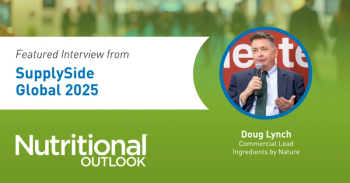
Camel Milk: The Next Generation of Dairy?
A handful of recent studies link camel milk with possible benefits for children with autism.
If cow’s milk is the Gen X of dairy, and soy milk the Gen Y, then camel milk may very well be Gen Z. As of this January, U.S. shoppers can buy the country’s first retail camel milk at market. The brand, Desert Farms, is now sold in Whole Foods Market stores in California, as well as through the company’s website.
One of the first things shoppers might notice about camel milk is the price. At approximately $18/pint, camel milk is far from cheap. But, according to founder Walid Abdul-Wahab, camel milk’s benefits may be well worth the cost-especially to parents of autistic children.
There are just a handful of recent studies linking camel milk with possible benefits for children with autism. The mechanisms are still undefined, but according to the authors of a 2013 study published in the journal Evidence-Based Complementary and Alternative Medicine, “camel milk could play an important role in decreasing oxidative stress by alteration of antioxidant enzymes and nonenzymatic antioxidant molecules levels, as well as the improvement of autistic behaviour as demonstrated by the improved Childhood Autism Rating Scale (CARS).”
“90% of our customers are parents who are using the camel milk for autism,” Abdul-Wahab tells Nutritional Outlook. “Almost all the calls we receive on a daily basis are regarding autism, and that’s because there are a lot of studies in the PubMed database showing a positive effect of autism and camel milk together.” He adds that there are talks about a new future clinical study on camel milk and autism at the University of California, Irvine.
Camel milk is also being studied for possible benefits to those with diabetes. Camel milk may also offer easier digestion than cow’s milk, Abdul-Wahab adds. “The reason for that, I was told, is that the structure of protein in the milk is very close to human’s milk,” because the digestive system of a camel is more similar to a human’s than a cow’s digestive system is.
But camel milk also appeals to the health-conscious consumer in general. According to Desert Farms, at only 110 calories/serving, camel milk is 50% lower in fat and saturated fat than USDA cow’s milk. It is also rich in probiotics and an excellent source of calcium and vitamin B1, as well as a good source of protein (5 g/serving), potassium, and phosphorus. Its fresh taste-which some describe as slightly salty, depending on the feed of the camel-“is very light and sweet and very smooth,” Abdul-Wahab says.
Abdul-Wahab says Desert Farms recently surpassed $150,000 in sales since launching. The company offers both raw and pasteurized camel milk, as well as frozen, kefir, and colostrum varieties.
Producing camel milk, at least currently, presents a few more production obstacles compared to cow’s milk-which is one reason for the current high price. For one, there are simply fewer camels available to milk in the United States. “There are a lot more cows than camels,” Abdul-Wahab says. “There are only around 3000–5000 camels in the United States, and not all of them are producing milk. I would say that only 10% out of the 3000-5000 camels are being milked in the United States at the moment. There are only seven to eight camel farms in the United States and they all have an average of six camels, most of which we work with and source from.” Most of the farms supplying Desert Farms milk are small Amish farms in the Midwest. Those farmers both produce and bottle the milk on site, and bottles are then either shipped to customers or trucked to retail stores.
Another complication is the camel’s milk production. Unlike a cow, a camel won’t produce milk unless its calf is present. “A camel won’t give milk out unless the baby stimulates the mom. We allow the calf to stimulate the mom, and then we distract the calf by feeding it organic oats and grass so that we can start milking the camel,” Abdul-Wahab explains. Milking is also done by hand. “It’s a longer process. It’s harder, and there’s a lot of labor involved,” he says.
Additionally, the lactation cycle of a camel is shorter than a cow’s. Abdul-Wahab says each camel only lactates for 10 months, which means Desert Farms can only procure milk from each camel for about 10 months out of the year. A camel gets pregnant every 2.5 years and has a gestation cycle of approximately 14 months-one of the longest gestation periods of all mammals.
And camels simply produce less milk than a cow does. “A camel produces only 7 liters, whereas a cow will produce 40 liters a day. So there’s definitely a supply-demand concern around here,” Abdul-Wahab says.
But buying a camel-which, at approximately $6000-$7000 per camel, far exceeds the cost of a cow-can pay off for farmers, in part due to the high price camel milk currently fetches at market. “It is costly to start a camel dairy, but you can start one with one or two camels, and with one or two camels, we’ve experienced a farmer making at least $80,000 in sales per year,” Abdul-Wahab says. “A farmer would get around $80/gallon on camel milk, whereas a cow dairy farmer would get a couple of dollars per gallon. So, obviously, the amount of effort you put into it is rewarding on a camel dairy farm.”
Abdul-Wahab says it isn’t the high price of camel milk that’s keeping the company niche for now; rather, it’s more about building awareness. Will U.S. consumers embrace camel milk? After all, Bedouins have consumed camel milk for generations in the Middle East. Abdul-Wahab has high expectations that by the end of this year more consumers will be aware of and seek the benefits of camel milk. “Until now, the camel has been known in the United States for all of the wrong reasons,” he says. “The most famous camel in the United States is the Camel cigarette. So what we’re trying to do is reignite this industry by creating a very fun, hipster brand that will appeal to all types of audiences. I think it should be a matter of time. I would say by the end of next year, everyone will know about the benefits of camel milk.”
Desert Farms is trying to reach modern-day customers with fresh and inviting packaging, with soothing colors and an icon of a camel and calf to appeal to moms, as well as this kicky slogan: “Make Every Day a Hump Day.” Looking forward, the company already has several new product extensions in development: camel milk powder for infants, camel milk ice cream, and camel milk whey protein for sports nutrition enthusiasts.
Editor-in-Chief
Nutritional Outlook magazine jennifer.grebow@ubm.com
Photo courtesy of Desert Farms
Newsletter
From ingredient science to consumer trends, get the intel you need to stay competitive in the nutrition space—subscribe now to Nutritional Outlook.





